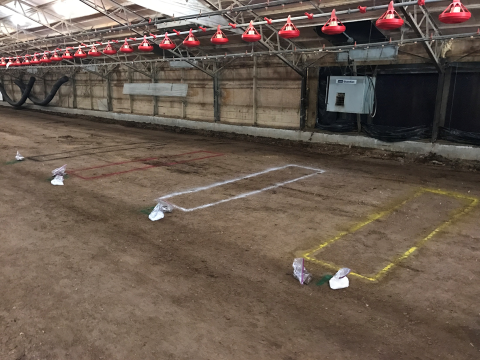In the United States, the majority of poultry houses are constructed on top of a dirt pad. Many growers notice that their performance begins to slip as more and more flocks are raised in a house even though the houses are still well managed. Growers also observe that no matter how thoroughly they clean and disinfect a house after a disease outbreak, the disease challenges tend to linger on.

When Disease and Performance Challenges Linger, Start with the Pad

Why do lingering issues exist? The dirt pad in a poultry house will absorb ammonia, increasing pad pH to 8-10. This high pH is very favorable to bacterial and viral growth and survival. In addition, most disinfectants are very high in pH and are inactivated in the presence of organic material so they are unable to disinfect the dirt pad in the house contributing to these lingering problems. One way to combat these problems is by using same litter acidifier you use at brooding in a new way—directly on the dirt pad itself.
Proper Steps to Pad Acidification with PLT®
- Wash or blow down the ceilings and side walls of the house.
- Spray the ceilings, sidewalls and equipment with a disinfectant, preferably one that is acidic.
- Completely clean out all the old litter from the house down to the dirt pad.
- Remove all litter from the corners and under fans. Sweep around footings if necessary. Make sure that absolutely no litter remains in the house.
- Be certain to completely remove the tarry, black layer just above the pad prior to acidification. This layer is high in anaerobic pathogens such as Clostridium sp.
- Apply PLT evenly to the whole floor at a rate of 150 to 200 lbs. / 1,000 sq. ft.
- Let the PLT sit for several days before spreading new litter in the house.
